Sigma 200-500mm F2.8 EX DG tests (2009)
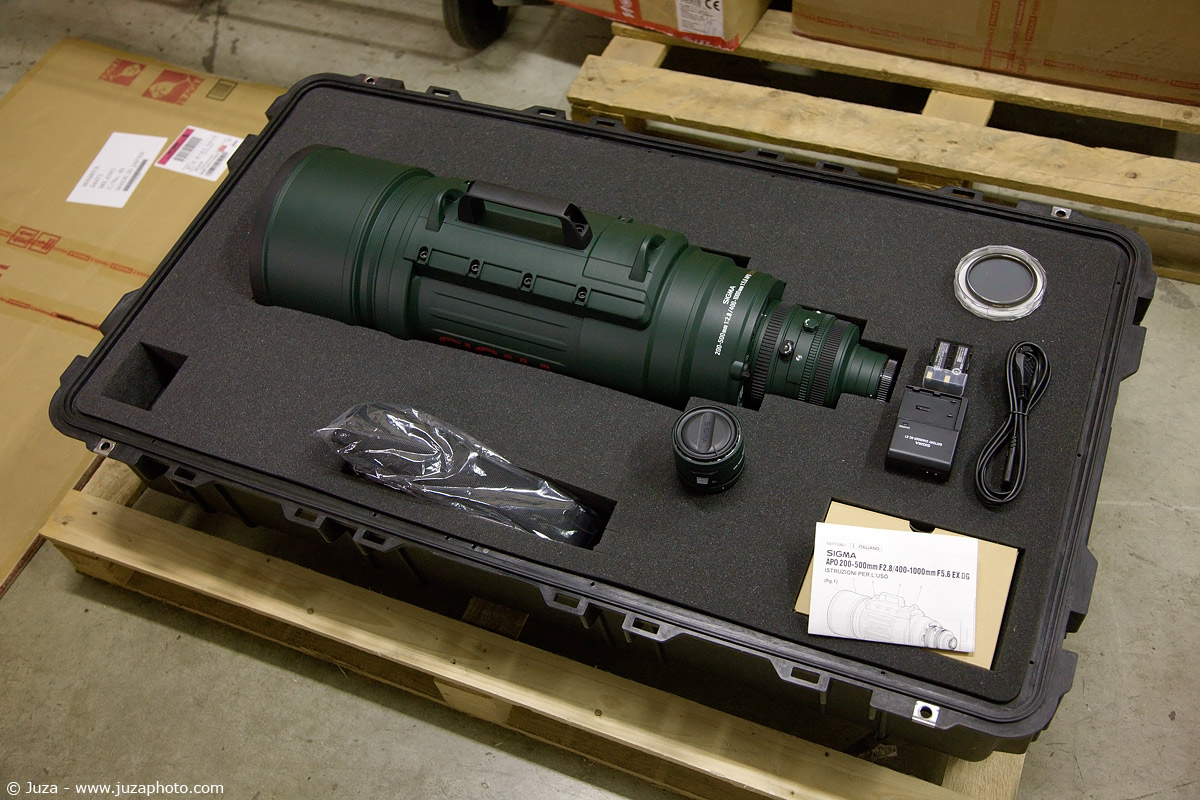
The Sigma 200-500 and accessories into its gigantic Pelican 1780 Long Gun Firearms Travel Case.
The Sigma 200-500 f/2.8 is one of the most extreme lenses ever built for the 35mm (24x36) format: it is the only 500mm f/2.8 of the world...and it is even a zoom! It weights almost 16 kg and it is 72 centimeters long; actually it is not as enormous as it looks in photo, but of course it is pretty big (a bit longer than 600 f/4 + hood and clearly wider) and it is really, really heavy.
At $ 24000, it is not cheap in any way, but it is still not as expensive as other extreme lenses as the Canon 1200mm f/5.6, that was sold at about $ 90000. Even though a long, bright tele is always tempting, I could not justify buying it - my 600 f/4 IS USM is already a pain to carry around, and the Sigma monster lens is really over the top. Still, it never ceased to fascinate me, and when I have finally seen that it was shipping, I have contacted M-Trading (the Italian importer of Sigma) for some hands-on tests.
Specifications
����| � | � � |
�
| �Focal length | � �200-500 mm (400-1000 with dedicated 2x extender) |
�
| �Lens construction | � �17 elements in 13 groups |
�
| �Number of Diaphragm Blades | � �9 blades |
�
| �Angle of view | � �12º - 5º (on 35mm FF reflex ), 8º - 3º (on APS-C reflex ) |
�
| �Macro ratio | � �0.13x (1:7.7) |
�
| �Max Aperture | � �f/2.8 |
�
| �Min Aperture | � �f/22 |
�
| �Stabilization | � �No |
�
| �Autofocus | � �AF Motor |
�
| �Full Time Manual Focus | � �Yes |
�
| �Closest Focus | � �2-5 meters |
�
| �Filter size | � �72 mm (Drop-In) |
�
| �Dimensions | � �236 x 726 mm |
�
| �Weight | � �15700 g |
�
| �Weather sealing | � �No |
�
| �Price | � �$ 24000 |
�
| �Production | � �2008 |
�
| �Accessories | � �front and rear cap, fixed lens hood, Pelican 1780 case, dedicated 2x extender, shoulder strap, Li-ion battery BP-21, battery charger.� |
�
Description
As you can expect from a $ 24,000 lens, the built quality is excellent. It is on par with Canon professional supertele - except for weather sealing - and it feels solid (and heavy) as a rock! It has a dark green finish...a pretty unusual color for a lens, but it does not look bad (and if you don't like it, you can always cover the lens with your favorite LensCoat pattern).
This is an unusual lens in every respect. When you move the focus ring, placed near the lens mount, you will hear a "vrrrrr"...indeed, even during manual focus the lens uses a motor to move the lens elements, you don't move manually the lens elements as in traditional lenses. The focus requires so much energy that the lens has its own rechargeable battery!
The same holds true for the zoom ring. When you rotate the ring, a motor inside the lens moves the lens elements to give you the desired focal length. Zooming is not as fast as in a traditional lens, but you have to consider that the lens motor has to move 20 centimeters large lenses back and forth along the inner rail! That said, overall I find zoom speed quite satisfying. You can view both the zoom setting and the focus distance on the LCD panel placed in front of the zoom ring.
Between the focus ring and the zoom ring there are two knobs: the first knob allows to mount and remove the filter holder; if you want to use filters, this lens is compatible with 72mm drop-in filters. The second knob allows to rotate the camera from horizontal to vertical position.
Near the LCD, there is the focus switch, to choose between AF or MF. Other than that, the Sigma 200-500 has a three steps focus limiter, that allow to get a faster autofocus: you can choose between full AF range, 5 mt - infinity or 10 mt - infinity. On the bottom left side of the lens, there is the battery door for the dedicated Li-ion battery BP-21.
On the top of the lens, there is a large handle, that allows to carry around the huge lens, and two small handles (where you can mount the shoulder strap). On the bottom of the lens, there are three screws for mounting is on the essential tripod: I think that this lens truly needs a gimbal head to be usable! (I have tested it on a customized PhotoSeiki TB-101 head, mounted on the top of the line Gitzo 5541 LS tripod).
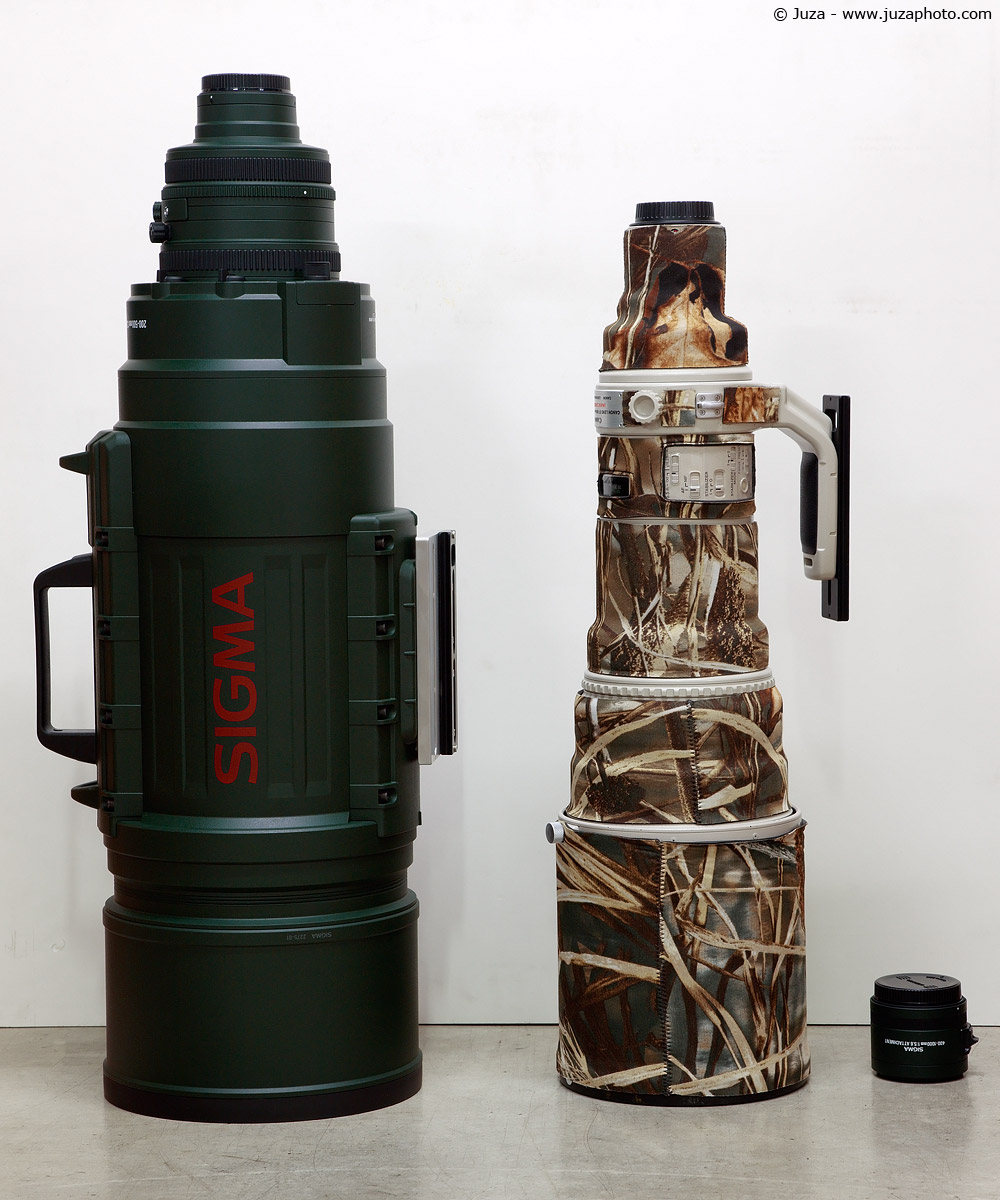
The 200-500 2.8, the Canon 600 f/4 L IS (with hood) and the Sigma 2x extender.
Side by side with the Canon 600 f/4 L IS + hood, the 200-500 2.8 does not look that big - indeed, it is just a little longer than the Canon, but it is clearly wider. Unlike all the other superteles that I know, the lens hood of the Sigma 200-500 is fixed, you can't remove it to save space when you put the lens in the bag. Other than that, the sigma is much more massive than the Canon, it weights three times the 600 f/4!
The 200-500 is supplied with an enormous Pelican 1780 Long Gun Firearms Travel Case... this case is 114 centimeters long, it weights 23 kg (without the lens), it is watertight, crushproof, and dust proof, and it can tolerate temperatures up to 100 Celsius degrees! (
www.pelican-case.com/1780.html) For sure it is the most sturdy lens case that I have ever seen, but it is impossible to carry around and it is way too big even for the 200-500; If I had this lens I'd buy a much, much smaller case, or - even better - a big backpack to carry it around.
Image quality (studio test)
Even though the lens has begun shipping few months ago, I had never seen image samples, not tests. In October 2008 I have been the first to publish some test samples; two months after, in December 2008, I have done much more precise, in-depth tests, that you can see in this page.
I have tested the Sigma 200-500 on my Canon 1DsIII (21 megapixel, FF). The lens was mounted on a sturdy Gitzo 5541 LS tripod with a customized PhotoSeiki TB-101 head; I have used mirror lock up and self timer. The following images are 100% crop from the unprocessed RAW file. I have tested the lens at even focal length, wide open and stopped down by 1 stop, both with and without the dedicated 2x extender.
Center crops, from the lens without extender:
����| � | � �f/2.8 | � �f/4 |
�
| �200 | � �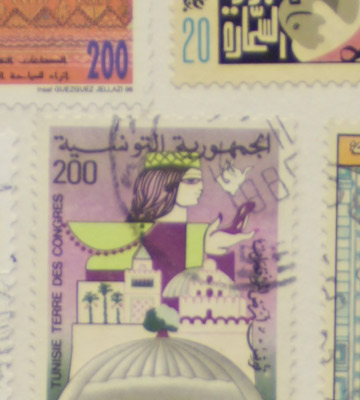 | � � |
�
| �300 | � � | � � |
�
| �400 | � � | � �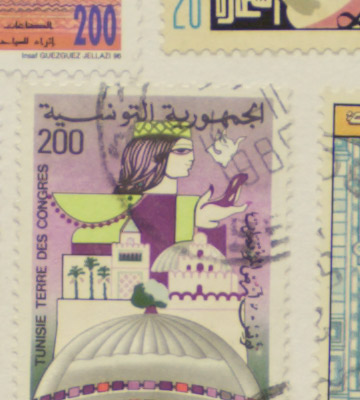 |
�
| �500 | � � | � � | �
�
Center crops, from the lens with 2x extender:
����| � | � �f/5.6 | � �f/8 |
�
| �400 | � � | � � |
�
| �600 | � � | � �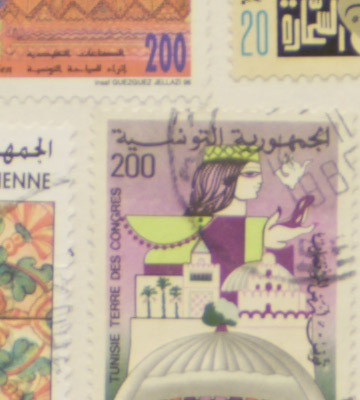 |
�
| �800 | � � | � � |
�
| �1000 | � � | � � | �
�
Corner crops, from the lens without extender:
����| � | � �f/2.8 | � �f/4 |
�
| �200 | � � | � � |
�
| �300 | � � | � � |
�
| �400 | � � | � � |
�
| �500 | � � | � � | �
�
Corner crops, from the lens with 2x extender:
����| � | � �f/5.6 | � �f/8 |
�
| �400 | � � | � � |
�
| �600 | � � | � � |
�
| �800 | � � | � � |
�
| �1000 | � � | � � | �
�
Without the extender, the image quality is very good wide open, and excellent stopped down to f/4. Of course, the only reason to buy the lens is to use it wide open - so the performance at f/4 don't have much importance; what really matter is that at f/2.8 it has good sharpness. It has a bit less contrast than I expected; it can be improved with Photoshop, but it has clearly less contrast than Canon lenses and other Sigma lenses at the 180mm Macro. Vignetting is minimal, and it has very little chromatic aberration.
With the dedicated 2x extender, the image quality takes a visible hit. You get a 1000mm f/5.6, but at f/5.6 is it quite soft and it has poor contrast; stopping down 1 stop makes a big difference - at f/8 it is as good as the Canon 500 f/4 + 2x. The big Sigma shines as 200-500; I would not recommend to buy it if you want only a 1000mm lens with the maximum image quality and you don't need the zoom (in that case, the Canon 800 f/5.6 + 1.4x extender gives a much better image quality).
That said, you must remember that the Sigma lens is a zoom, while all Canon superteles are primes - with zooms you always give up a little of image quality, but you have a lot more versatility than a prime. Considering how extreme the Sigma 200-500 is, the performance with the 2x is not bad.
Image quality in the field
In April 2009, I have done and in-depth field test of the 200-500 2.8:
Sigma 200-500 f/2.8 EX DG on the field!
Other review or articles
Sigma 200-500mm F2.8 EX DG product page on Sigma UK website
Download:
Sigma 200-500 user manual (Italian) page 1 -
Sigma 200-500 user manual (Italian) page 2
Conclusions
The Sigma 200-500 is undoubtedly a fascinating lens...it is the only 500mm f/2.8 of the world, and its price is not completely out of reach if you are a professional. What is more difficult to justify are its size and weight: carrying around a 16 kg lens (with at least 5 kg of tripod and head) is far from easy; moreover, it lacks of image stabilization (it may be a real problem at the longest focal, even on a sturdy tripod).
It does not have HSM (ultrasonic) motor, but the autofocus is quite fast; the f/2.8 aperture, of course, makes a big difference in background blur, in comparison with f/4 lenses, and it gives a 1 stop advantage, that may help a lot if you are photographing in low light. The image quality is very good as 200-500 f/2.8, and acceptable at 400-1000 f/5.6.
Who is for? In the field of nature photography, it may have an application as safari lens - during safaris you always shoot from the car so carrying around the lens is not a problem, and the f/2.8 aperture allows to get very clean background and fast shutter speeds.



































 JuzaPhoto contains affiliate links from Amazon and Ebay and JuzaPhoto earn a commission in case of purchase through affiliate links.
JuzaPhoto contains affiliate links from Amazon and Ebay and JuzaPhoto earn a commission in case of purchase through affiliate links.